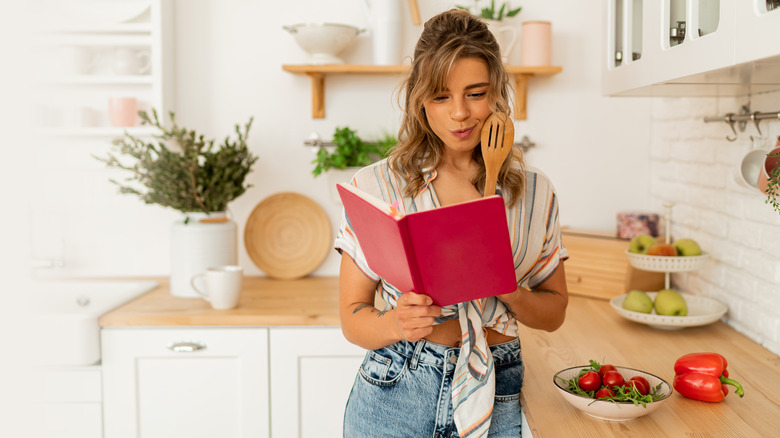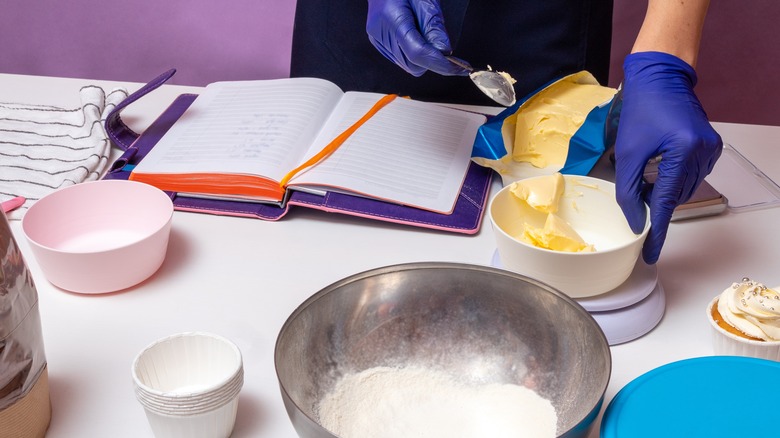The Biggest Mistake You're Making When Reading A Recipe
If you're like most home cooks, whenever you're making a new dish or even an old stand-by, you're probably following a recipe. Some dishes, such as soups and stews, have a lot of wiggle room, allowing you to use the recipe as nothing more than a general template. But other foods, such as soufflés or pastries, have fairly explicit steps that need to be followed exactly to achieve the best results.
Still, even when following a recipe, most of us have had our share of flops. What gives? Well, to ensure recipe success, there are several different factors that come into play. It's important to have the right ingredients, for one thing. It also helps to have the proper tools, and you should also make sure that the recipe you select is a good one. Many online recipes, as well as some of the ones that find their way into print, may be failures waiting to happen. (Even the best cooks don't always do a great job of explaining how they achieve their results.)
With a poorly written recipe, you may find that you'll need psychic powers to duplicate the developer's every step. Still, assuming you've chosen your recipe wisely and have all of the necessary ingredients and equipment on hand, the final step to assuring a successful result involves reading the recipe very carefully.
Pay close attention to commas in the ingredient list
Sure, it sounds obvious to read a recipe before you make it. Still, you shouldn't just skim over it to make sure you've got the necessary components in your pantry or refrigerator and that there are no "secret ingredients" that will make you gag or break out in hives. What will really help is to do a close read-through where you pay close attention to the details, particularly the punctuation.
Punctuation? How could this possibly make a difference in a recipe? As it happens, punctuation can be crucial, particularly when it comes to measuring ingredients. For example, if the recipe calls for "1 cup of flour, sifted", this is not the same thing as "1 sifted cup of flour." In the first instance, you'd measure the flour first, then sift it, while in the second instance, you'd sift, then measure. The same thing applies to "1 cup of sliced strawberries" versus "1 cup of strawberries, sliced." (Of course, if the person who wrote the recipe isn't aware of this distinction, then all bets are off.)
There is, however, one sure-fire way to make sure you've got the amounts down: investing in a good kitchen scale and sticking to using recipes that call for ounces or grams instead of cups. Weighing ingredients makes for extra work, but it takes the guessing out of measuring — you need never use the wrong amounts ever again.

